
This is 10×4 sec ISO 400 sub-images stacked in IRIS. I had a feeling it would be difficult to process and it was. But, I managed to get this final image regardless.
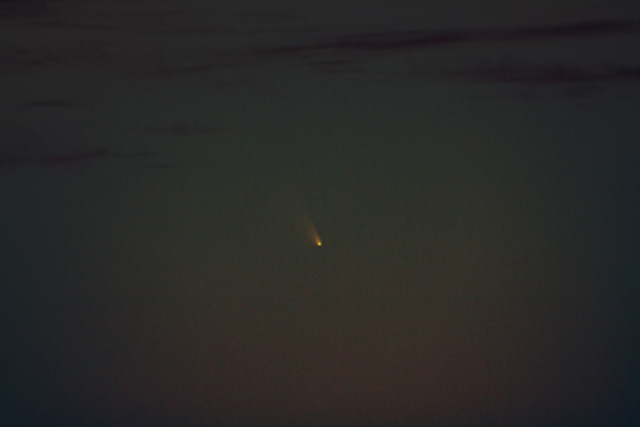
Here’s one of the first images from the batch of images I shot of Comet Panstarrs on March 11, 2013. I used a 200mm F/2.8 Canon lens with a Sigma 2X Teleconverter, for 400mm of focal length at F/5.6. This was a 1 second exposure @ ISO 400. The camera was riding on an old German Equatorial mount (a CG3 clone) with a clock drive.
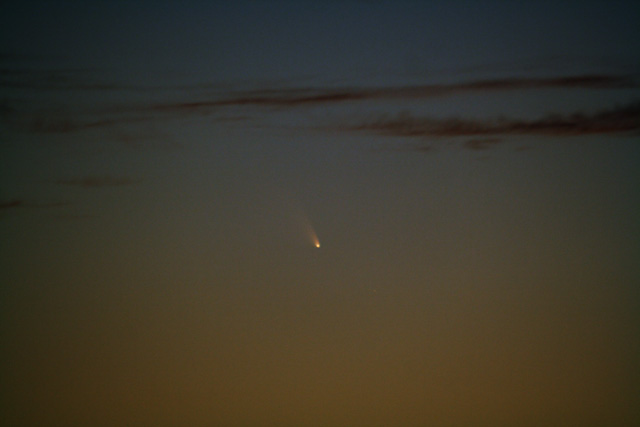
Comet Panstarrs with a 2 second exposure @ ISO 400, Canon 200mm F/2.8 w/Sigma 2X Teleconverter, Canon XS (modified) DSLR.
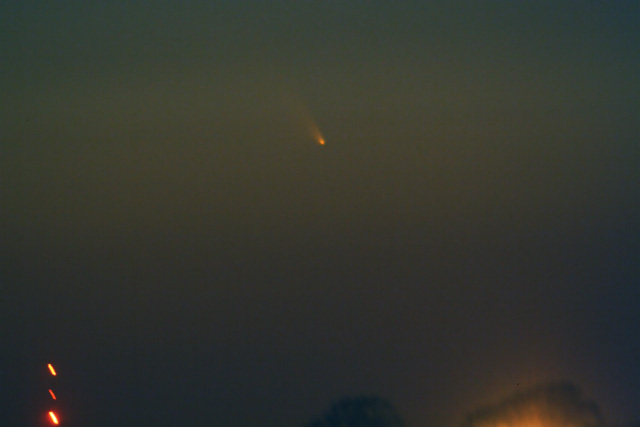
Here’s one of the last shots before the comet sank into the murk. I couldn’t even see it anymore with the binoculars, but the camera picked it up with a 10 second exposure.
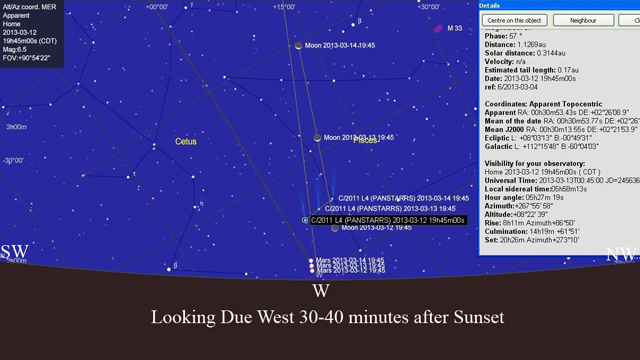
All this testing of camera and mounts I’ve been doing lately is for Comet Panstarrs. It is very low in the west at sunset now, but it is getting higher each night. It should be high enough out of the muck to see by March 12, 2013, when it will be next to the moon right at twilight.
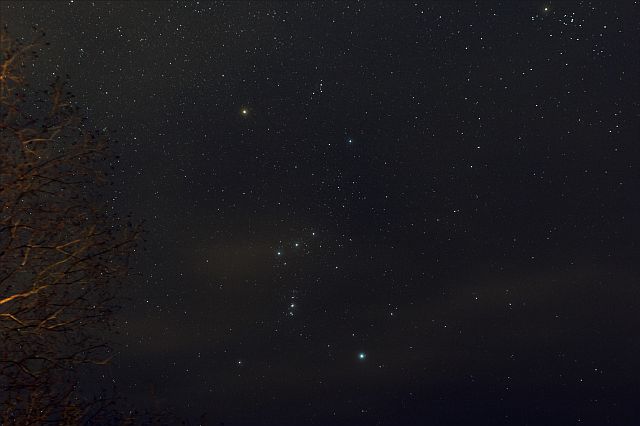
Here’s a single 30 second exposure with my 28mm F/2.8 lens and my camera mounted on an old CG3 style mount with a simple clock drive. I had a Bogen ball-head camera mount so I could position the camera. The mount works well at this focal length for 30 seconds. Too bad there were clouds.
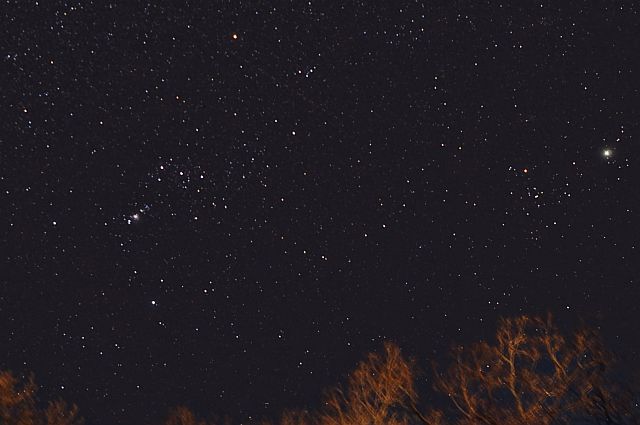
The Orion and Taurus constellations taken with a 28mm F/2.8 lens. The camera used is a Canon XS at ISO 1600 and was mounted on a regular tripod. I used 3×20 sec exposures combined in IRIS. Calibration frames were from old data. Bright Jupiter is visible on the right. Even with just 20 seconds for exposure, the stars trailed due to the Earth’s rotation. I had to do some star rounding in PS to correct it somewhat.
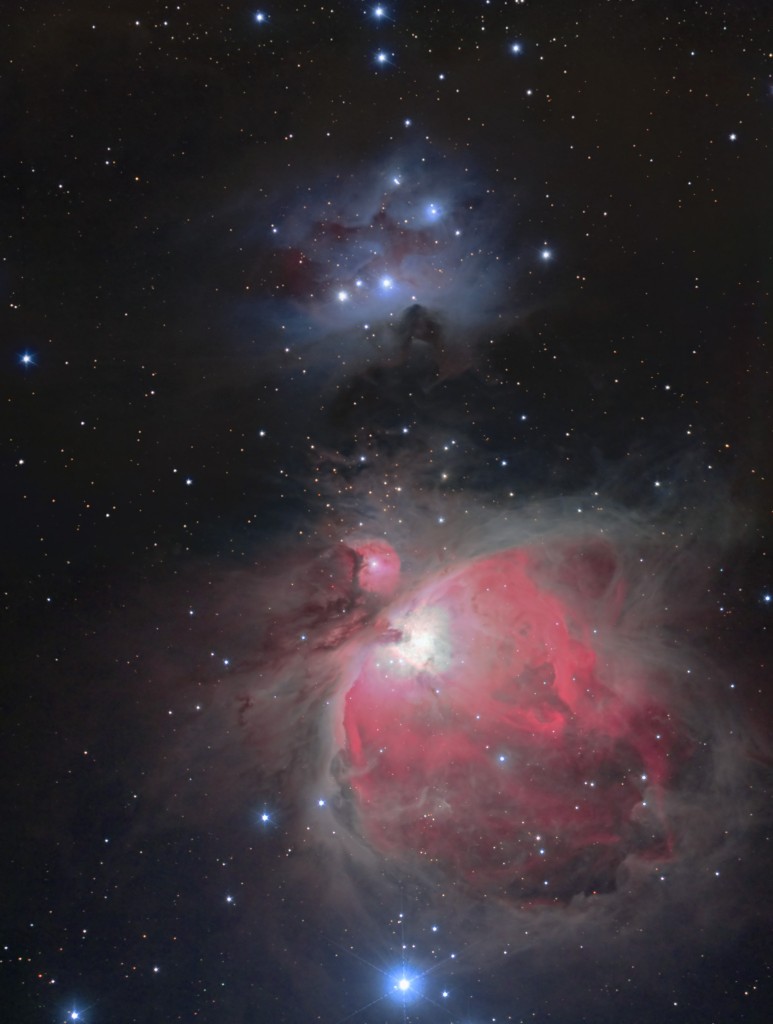
I shot some sub-images with my modified Canon T3 of the Running Man the other night and added that to the Orion Nebula test image I took recently and made a composite mosaic image of the two. I also shot some short subs (9) of the Orion Nebula core and made a HDR image from them and then composited that in to replace the burnt out core that I had previously.
So, the breakdown is 36×180 sec @ ISO 3200 for the bottom half, 30×180 sec @ ISO 400 for the Running Man and 9 sub-images from 5 to 30 seconds @ ISO 1600 merged into a HDR image in IRIS and then divided into 3 layers of various opacity settings and masking to blend in for the core area.
The ISO 3200 images had 2 LP filters – a Deep Sky filter and an IDAS-LPS. The ISO 400 images and the core images were only shot with an IDAS-LPS. A GSO 8″ F/4 Newtonian with a GSO 2″ Coma Corrector was the imaging scope.